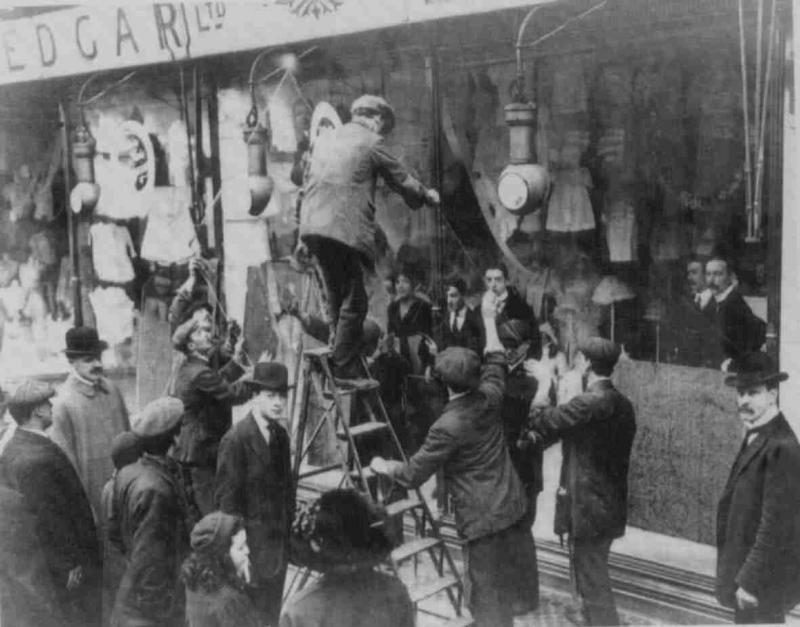Women’s History Month – Jennifer Godfrey
Pen & Sword author Jennifer Godfrey’s second book, Secret Missions of the Suffragettes – Glass breakers & Safe Houses (‘Secret Missions of the Suffragettes’), will be released at the end of this month. We caught up with her to find out more about the book, what inspired her to write it and some of her favourite parts.
What does Secret Missions of the Suffragettes focus on?
The first part of the book details the March 1912 Great Militant Protest led by Emmeline Pankhurst of the Women’s Social and Political Union (WSPU). Across two nights in March 1912, more than 250 women were arrested and charged with using hammers and stones to smash the windows of shops and offices across London. Led by Emmeline Pankhurst who targeted 10 Downing Street, the idea behind this mission was to have large numbers fill the prisons at the same time, the hope being that this would influence the policy of the Government.
Part two goes on to explore ‘behind the scenes’ of the movement – the suffragette safe houses and rest homes as well as their daring escapes whilst under police surveillance, the suffragettes’ self defence training and use of disguises, codes and alias names.


What inspired you to research and write this book?
My first book, Suffragettes of Kent, features the story of Kent working class maid Ethel Violet Baldock. She was arrested on 4 March 1912 as part of the Great Militant Protest. I was eager to know more about the background to this protest and if possible, further understand how Ethel became involved and what she and others would have experienced.
Having been researching the suffrage movement since 2017 I have also become fascinated by the secrecy behind the missions and escapes. The planning undertaken for missions and the codes, elaborate disguises and pseudonyms used by the suffragettes never ceases to amaze me. When giving talks at schools, societies and groups about my first book I am always asked about this aspect of the suffrage movement.

What did you uncover?
Women travelled from most parts of England and from Ireland, Scotland and Wales to participate in this protest. There was even a young American woman arrested and another woman from Germany who whilst visiting family in London got involved.
Glass breakers were told by the WSPU that they would likely face 7-days in prison if they only broke a small pane of glass. However, their sentences ranged from 14-days to 6-months. Mrs Emmeline Pankhurst received a 9-month sentence as she was also found guilty of inciting others to commit criminal damage. Some lost their employment owing to the length of time away. Many women left behind families, including babies and young children. Two of the women arrested and imprisoned were pregnant.
The suffragette prisoners, held as ordinary rather than political prisoners, worked tirelessly to smuggle notes, information and materials in and out of prison. They also gave significant attention to keeping each others’ spirits high by writing poetry, putting on plays and a sports day, singing and embroidering their signatures on handkerchiefs and cloths. The poetry and handkerchiefs and cloths were smuggled out by the suffragettes.
It transpired that Ethel Violet Baldock, a teenager – at only nineteen years old, was the youngest arrested glass breaker! Furthermore, it seems that Ethel’s involvement was not compliant with Mrs Emmeline Pankhurst’s reportedly inflexible rule that no one under 21 years old should do anything that might incur a prison sentence.
At the other end of the age spectrum, the eldest glass breaker arrested at this protest was 79-year-old Mrs Hilda Eliza Brackenbury, owner of suffragette safe house, Mouse Castle, in Campden Hill Square. Secret Missions of the Suffragettes examines some of the safe houses and rest homes frequented by the suffragettes when hiding and recuperating. There are also accounts of daring escapes from the safe houses by suffragettes under surveillance by the police! Many of the escapes took place in broad daylight with the women using decoys and disguises including chorus girls, an elderly woman, errand boy and nurse.
Alias names used by some of the suffragettes and codes created by the WSPU to communicate important instructions and messages is revealed. The WSPU also rented a house that overlooked Holloway and when a released glass breaker brought out a code from prison those outside based in the house were able to communicate with those still imprisoned. Another more conspicuous method of communicating was via a megaphone from outside the prisons!
Some of the 1912 glass breakers were in an elite group known as the Bodyguard. Members of The Bodyguard were trained in jujitsu and armed in order to protect Emmeline Pankhurst and other WSPU leaders. These women were required to be available at short notice to respond to urgent leader protection and extraction missions. These secret missions were dangerous sometimes resulting in injuries. Some of the preparation made by The Bodyguard seems somewhat inadequate however – one reported that they put corrugated cardboard up their sleeves to prevent people from being able to pinch them!

What are your favourite parts?
The pre and post Great Militant Protest connections and relationships between the glass breakers are simply fascinating. There are so many that it is impossible to include them all but it was immensely satisfying to convey some in the Secret Missions of the Suffragettes.
It was fascinating to research and write about the secrecy behind some of the suffragette missions. A particular favourite were the elaborate disguises and decoys used to help suffragettes escape from safe houses.

You can pre-order Secret Missions of the Suffragettes – Glassbreakers and Safe Houses here.


